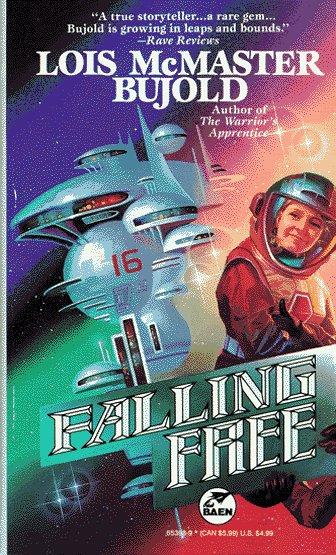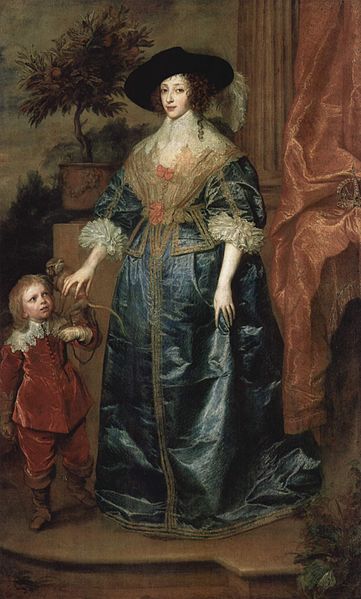R ia Cheyne's "research focuses on representations of disability and illness in fiction, especially popular genres such as science fiction, romance, horror and crime" and she suggests that
ia Cheyne's "research focuses on representations of disability and illness in fiction, especially popular genres such as science fiction, romance, horror and crime" and she suggests that
science fiction offers a space where alternative conceptions of ‘ability’, ‘disability’ and what constitutes a ‘normal’ human body can be explored. [...] The story might be set on another planet, in an artificial environment like a spaceship, or on an Earth where conditions are radically changed from the way they are now. What this means is that there’s a lot more potential to depict different environmental conditions than in most other types of fiction – including those in which the ‘normal’ human body is ill-adapted. [...] Alternatively, science fiction may depict environments that are enabling for those with bodily configurations or capabilities outwith the norm.
This resonated with me because I've recently read Lois McMaster Bujold's Falling Free (1988) in which most of the characters have an extra set of arms instead of a pair of legs. This is extremely useful in the zero-gravity conditions in which they live and to which they are much better suited than two-armed and two-legged humans. It also, though, made me think about Geoffrey Trease's Mandeville series, set mostly in England during the reign of Charles I, which I read this week and in which one of the recurring characters, Pietro Zorzi, is
Barely four feet high, he was in all respects quite naturally proportioned, as was the miniature violin on which he played.
He played excellently. But the applause he won was perfunctory, as though the Duke and his household had little appreciation of music and were merely amused that so small a being could produce it at all. (123-23)
This is historical fiction rather than science fiction but even so it contrives to depict a situation in which there is an environment to which "the 'normal' human body is ill-adapted." The Duke's dwarves are housed in a special set of apartments:
"Follow me," said Zorzi. "Mind your heads."
It was not too difficult, even for Anthony. It meant stooping, and flexing at the knees, and placing one's toes with unusual care on the narrow treads of the stairs. [...] This miniature suite had been built, decorated and furnished with an exquisite attention to detail. [...] If the painters and plasterers and other craftsmen had been of normal size, they must have worked in most cramped positions, squatting like miners. (152)
In the third book of the series a situation arises which is "enabling for those with bodily configurations or capabilities outwith the norm" inasmuch as Zorzi's size enables him to carry out a particular task which is crucial to foiling a plot.
I think it could be said of Trease's depiction of Zorzi, just as much as of the science fiction novels discussed by Cheyne, that the
transformations of impairment status that characters undergo in these novels – from non-impaired to impaired, or vice versa – though the body itself has not changed, demonstrates the extent to which impairment is created by features of the physical environment. As Rosemarie Garland-Thomson writes, “Stairs disable people who need to use wheelchairs to get around, but ramps let them go places freely” (524). As a tool for political change, the social model of disability insists that rather than being something inherent to the individual, disability is created by barriers in society which disable a person. The disability is created by barriers in the environment – which can include attitudinal barriers as well as architectural ones.
Trease was a politically committed author and his novels often address "barriers in society":
As a writer, he started out as a passionate young socialist determined to overthrow the sentimental romanticism of historical fiction at the time. [...] He came to believe it was wrong "to press party politics on readers too immature to argue with him", though of course his books remained permeated with his own liberal values as he wrote [...]. Trease was also innovatory in introducing girls as co-partners in his stories. (Thwaite)
 In Zorzi's case, the barriers relate primarily to his size but Anthony is restricted by his low social class and Amoret by her gender. Indeed, in the first book in the series Amoret is only able to participate in the adventure as a result of dressing as a boy. Thinking about these differing barriers in the light of the social model of disability reminded me of Aristotle's ideas about women:
In Zorzi's case, the barriers relate primarily to his size but Anthony is restricted by his low social class and Amoret by her gender. Indeed, in the first book in the series Amoret is only able to participate in the adventure as a result of dressing as a boy. Thinking about these differing barriers in the light of the social model of disability reminded me of Aristotle's ideas about women:
To Aristotle, women were imperfect men, the result of something wrong with the conception that created them [...]; a woman was thus "a deformity, but one which occurs in the ordinary course of nature." Aristotle was not sure exactly why imperfect men were required in the natural scheme of things, but decided that it must be because they performed a function necessary for men, [...] he saw their primary function as procreation. (Weisner 18)
That, of course, suggests that bodies which are specially adapted may still be considered inferior, which took me back to the way that the "quaddies" are seen by some of the "normal" humans in Bujold's novel. Nonetheless, in both Bujold and Trease's novels there are scenes which
foreground the ways in which disability can be created by barriers in the environment. [...] that encounter [...] is valuable because it encourages readers and viewers to reflect upon their own understanding of disability. I’m not assuming a straightforward influence – read this book and your prejudices will disappear! Rather, I’m talking about the potentials these works might have in terms of encouraging reflection upon beliefs and values that otherwise might not be questioned. (Cheyne)
In Bujold's novel Leo, one of the two-armed human characters, is shown to reflect and he concludes that
Men adapted to free fall, it was the going back that crippled them.
"I am a quaddie," Leo whispered in wonder. He regarded his hands, clenched and spread his fingers. "Just a quaddie with legs." He wasn't going back. (137)
Trease may not have taken his readers out of this world in order to encourage them to reflect "upon beliefs and values" but I think he nonetheless encouraged reflection on the ways in which the great majority of people might be said to be disabled by "attitudinal barriers" even if not also by "architectural ones."
---------
Bujold, Lois McMaster. Falling Free. Riverdale, NY: Baen, 1988.
Cheyne, Ria. "Disability in Science Fiction." DaDaFest.
Thwaite, Ann. "Obituary: Geoffrey Trease." The Independent. 30 Jan. 1998.
Trease, Geoffrey. Mandeville. London: Macmillan, 1980.
Weisner, Merry E. Women and Gender in Early Modern Europe. Cambridge: Cambridge UP, 2000.
---------
The painting is Anthony Van Dyck's portrait of Queen Henrietta Maria with Sir Jeffrey Hudson. I found it at Wikimedia Commons. In an author's note Trease wrote that Sir Jeffrey Hudson was "the Queen's dwarf" (189).

Hi Laura, I loved this post
Hi Laura,
I loved this post and thought you might be interested in this LMB conference to be held at Anglia Ruskin Uni UK
http://call-for-papers.sas.upenn.edu/node/52317
Am a tad concerned there is nothing for embodiment, bodies and disability listed though. I looked convenor up she has written Dr Who novels and fanfic. THe key note speaker is Edward James - have you heard of him?
I'm very glad you liked the
I'm very glad you liked the post. I'm just beginning to write about Pamela Morsi's Simple Jess so thoughts about bodies and disability are right at the forefront of my mind. There hasn't been a lot of academic work done on disability in romance novels, though I know of some that should be forthcoming relatively soon. I'm also looking forward to a post Ridley mentioned she's written for Radish Reviews.
Thanks for the link about the conference. I thought I'd spread the word so I've just put up details about it at Teach Me Tonight. I've not heard of Edward James but I'm not that knowlegeable about Bujold so that doesn't mean anything. He's not one of the contributors to the recently published Lois McMaster Bujold: Essays on a Modern Master of Science Fiction and Fantasy, edited by Janet Brennan Croft (excerpt here).
Having done a bit more
Having done a bit more investigating, I wonder if it's the Edward James who
I think it is that Edward
I think it is that Edward James who is also a former Professor of Medieval History at University College Dublin if the google-fu has worked :) I linked with the convenors of the LMB conference on Twitter and they responded positively to my comment about the body, disability stuff and said they thought EJ would be working on some of that in his keynote address. Also thanks for heads up re the LMB book, I just bought it via Book Depository.
I am looking forward to Ridley's post very much.